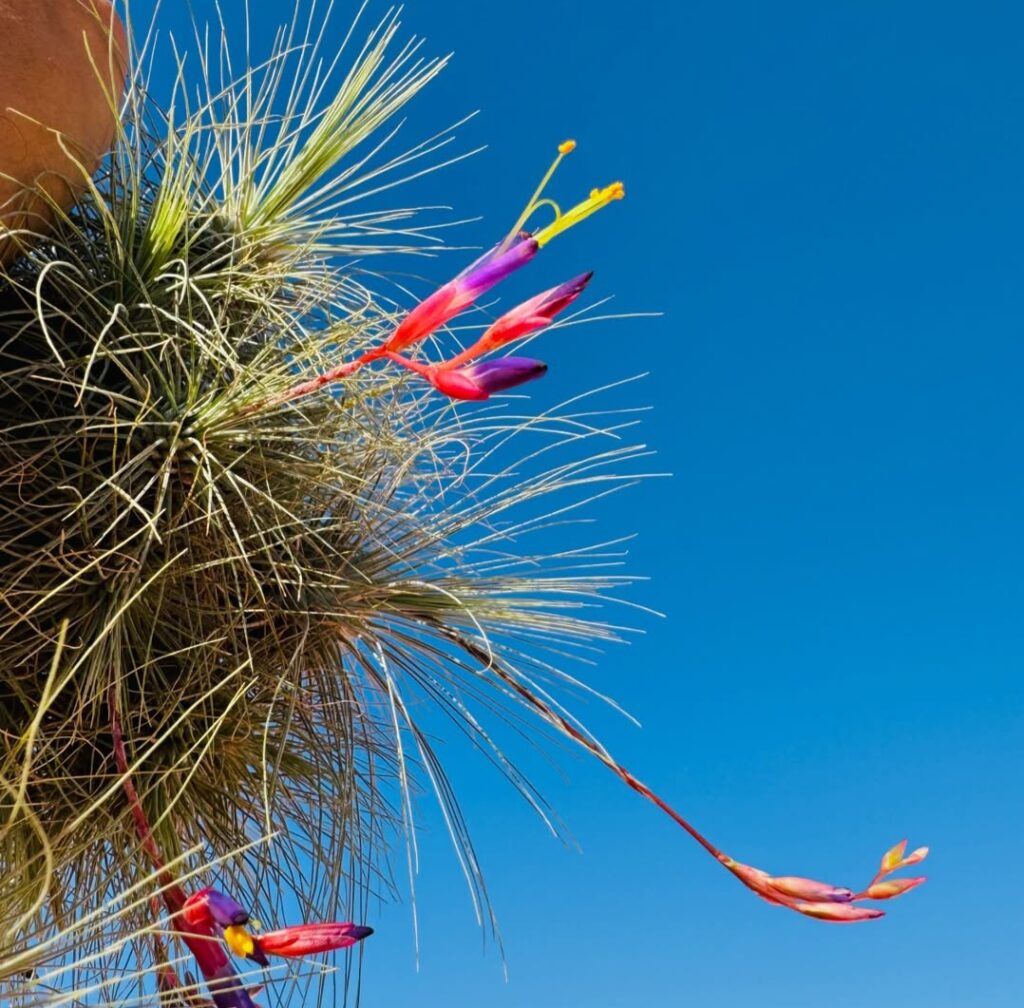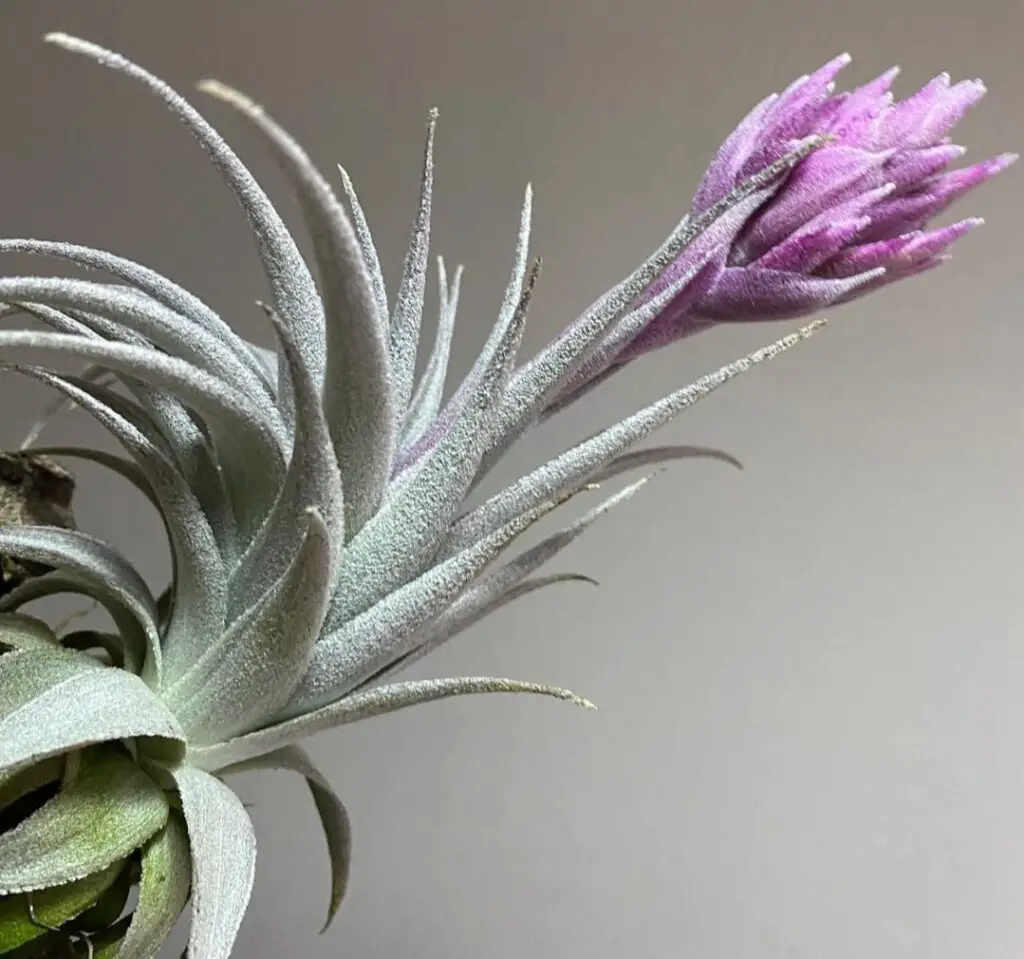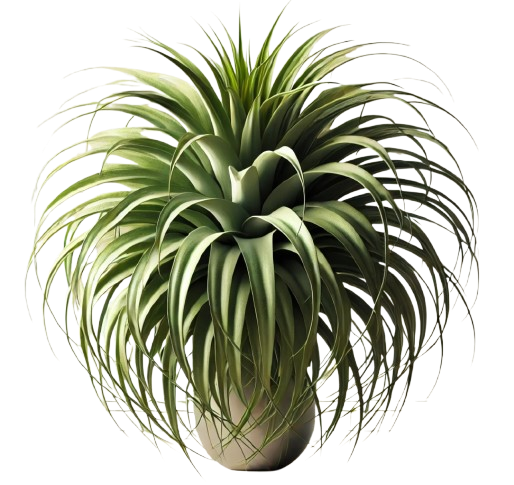Tillandsia fuchsii is a wonderfully adaptable and forgiving plant, making it a perfect plant for beginners and seasoned growers with slow growth. Rate means it won’t demand constant attention, yet it rewards
Patient with occasional delicate blooms and graceful leaf structure. However, like all air and moisture to maintain its health. A little neglect may not kill it right away, but understanding its rhythm and responding to its subtle needs will go a long way in keeping it thriving. As plant enthusiasts increasingly turn
Towards minimalist, space-saving
greenery Tillandsia fuchsii continues to grow in popularity. Its compact size and ability to live without soil make it ideal for modern homes, offices, or small apartments where traditional potted plants may not fit. whether you’re styling it as a centrepiece, suspending it from wire hangers or
Simply placing it in a windowsill, this air brings a serene and natural charm to any space. Let’s explore the 20 care tips to help your Tillandsia fuchsii in any environment.
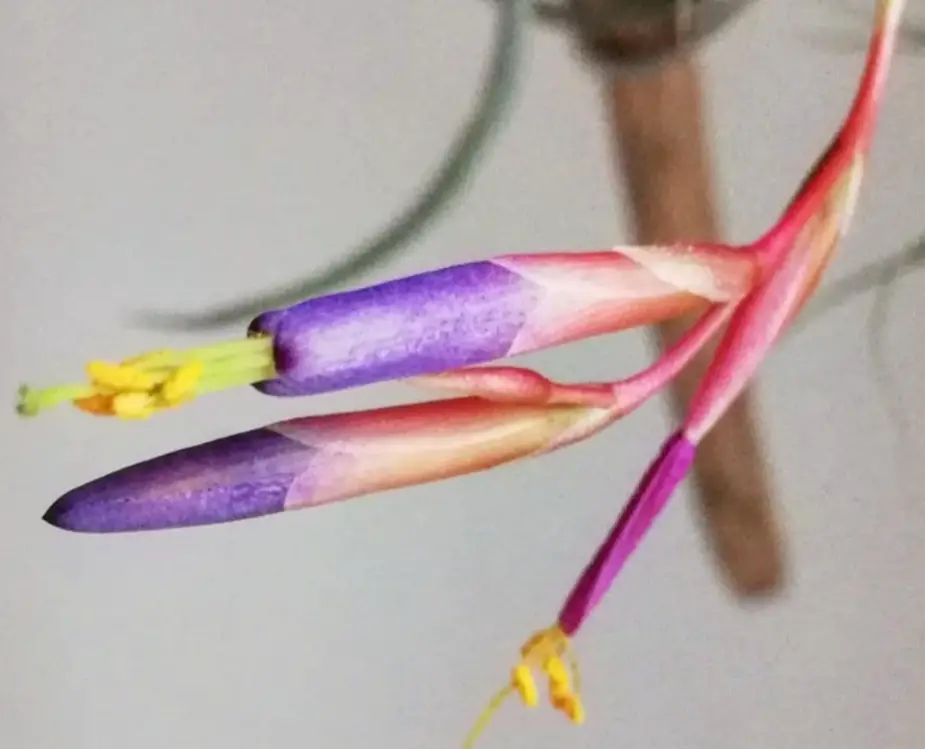
- 1 1. Know the Nature of Tillandsia Fuchsii
- 2 Provide Bright, Filtered Light
- 3 Mist or Soak Based on Your Environment
- 4 Dry Thoroughly After Watering
- 5 Never Plant It in Soil
- 6 Avoid Cold Drafts and Extreme Heat
- 7 Ensure Good Air Circulation
- 8 Keep Humidity Around 50–70%
- 9 Fertilise Monthly with Air Plant Food
- 10 Avoid Over-Fertilising
- 11 Prune Gently When Needed
- 12 Clean the Leaves Occasionally
- 13 Rotate Your Plant for Balanced Light
- 14 Place in a Bright Bathroom or Kitchen
- 15 Avoid Closed Containers Without Ventilation
- 16 Watch for Early Signs of Stress
- 17 Check for Pests Like Mealybugs
- 18 Encourage Blooming With Proper Light and Care
- 19 Propagate Pups After Flowering
- 20 Keep a Consistent Routine
- 21 My personal experience growing Tillandsia fuchsii
- 22 final thoughts
- 23 FAQ
1. Know the Nature of Tillandsia Fuchsii
Tillandsia fuchsii is a small epiphyte, meaning it naturally grows on trees or rocks without soil. It absorbs moisture and nutrients through its trichomes—tiny hairs covering its narrow leaves. Its small, globe-shaped base and feather-like leaves make it a favourite among collectors and air plant beginners alike.
Provide Bright, Filtered Light
Tillandsia fuchsii should be placed in an area with lots of bright, indirect light. Direct sunlight, especially through glass, can scorch its thin leaves. North- or east-facing windows are excellent, or you can use full-spectrum grow lights for indoor environments with low natural light.
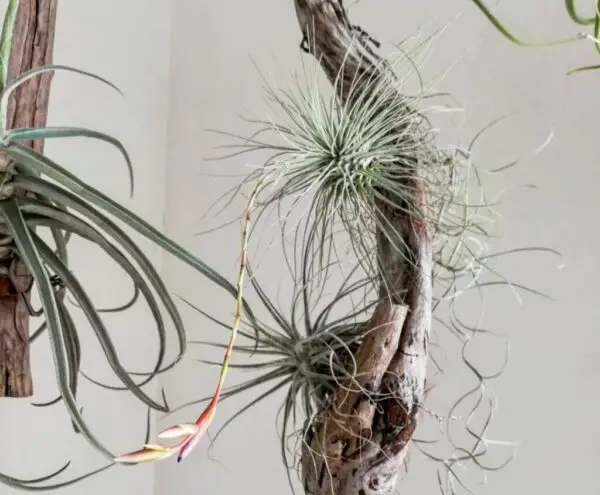
Mist or Soak Based on Your Environment
In dry environments, mist your plant lightly 3–4 times a week, making sure it gets enough moisture without staying wet for too long. Alternatively, you can soak it once a week in room-temperature water for 15–20 minutes. If the weather is humid, soaking every 10 days might be enough.
Dry Thoroughly After Watering
One of the biggest mistakes with air plant care is not drying them properly. After soaking, Tillandsia fuchsii should always be let to dry upside down or on a towel in a well-ventilated area. Water should never sit in the middle of it since this might cause decay.
Never Plant It in Soil
Like all air plants, Tillandsia fuchsii does not grow in soil. Planting it in soil will suffocate its roots and lead to rot. Instead, display it on wood, shells, rocks, or in open terrariums with good airflow.
Avoid Cold Drafts and Extreme Heat
This plant prefers temperatures between 50°F and 90°F (10°C and 32°C). Avoid placing it near air conditioners, heating vents, or windows that let in cold winter air. Sudden temperature changes can damage the fine leaf structures.
Ensure Good Air Circulation
Air plants need good airflow to stay healthy. Tillandsia fuchsii especially benefits from a breezy environment. Avoid enclosed glass terrariums unless they are open on top or have good ventilation.
Keep Humidity Around 50–70%
Because it naturally grows in high-altitude climates with morning mists, Tillandsia fuchsii thrives in moderately humid spaces. If your home is dry, consider misting more often or placing a humidifier nearby.
Fertilise Monthly with Air Plant Food
Once a month, apply a fertiliser diluted to ¼ strength specifically for air plants or bromeliads. This promotes new growth and, if the plant is healthy and mature, may help with blooming.
Avoid Over-Fertilising
Excessive fertiliser can harm and burn the delicate leaves. Always use a diluted solution and limit to once per month. If you miss a feeding, don’t double up—just return to your regular schedule.
Prune Gently When Needed
If you see any dried leaf tips or browning, trim them with sanitised scissors. Take care not to damage healthy leaves, as the plant is sensitive and slow to recover from physical damage.
Clean the Leaves Occasionally
Dust can settle on the plant and interfere with its ability to absorb moisture from the air. Give it a quick rinse under lukewarm water or mist and gently clean the leaves with a soft brush if needed.
Rotate Your Plant for Balanced Light
If one side of your Tillandsia fuchsii is getting more light than the other, rotate the plant every few days. This helps it grow evenly and prevents one side from drying out or becoming stunted.
Place in a Bright Bathroom or Kitchen
Bathrooms and kitchens are great spots for air plants, provided they get bright light. The natural humidity in these rooms is perfect for Tillandsia fuchsii, and they also make beautiful natural decor.
Avoid Closed Containers Without Ventilation
Terrariums can be beautiful, but if they’re sealed or enclosed, your air plant may suffer from poor airflow and excess moisture. Always use open or ventilated displays for long-term health.
Watch for Early Signs of Stress
Curled or droopy leaves, brown tips, or fading colour may indicate dehydration or stress. If you notice these signs, increase humidity or watering frequency and check for proper light exposure.
Check for Pests Like Mealybugs
Though rare, air plants can get pests. Mealybugs are the most common. Use neem oil or a diluted rubbing alcohol spray to gently clean the plant if pests are spotted.
Encourage Blooming With Proper Light and Care
Tillandsia fuchsii produces a vivid purple or pink flower spike when it blooms once in its lifetime. Keep it healthy with regular maintenance, monthly fertiliser, and strong light to promote blooming.
Propagate Pups After Flowering
After blooming, the mother plant will produce pups (baby plants) from its base. Once these pups reach 1/3 the size of the parent, gently separate them and grow them independently.
Keep a Consistent Routine
Consistency is key with Tillandsia fuchsii. A stable routine of watering, light, and occasional feeding is more effective than over-caring. These plants are simple, but they thrive with dependable habits.
My personal experience growing Tillandsia fuchsii
When I first brought home my Tillandsia fuchsii i wasn’t sure what to expect . But over time i have learnt what works best through trial and error and now they’re some of my favourite air plants for .
I keep a simple routine once a week , I full immerse them in water for about 20 to 30 minutes . I use clean
Room temperature water and gentle
Shake of the excess afterwards . It’s is important to let them dry completely
So i place them upside down on a towel in a well ventilated spot . This prevents water from setting at the base .
One a month I mix in a few drops of mineral liquid fertilizer with the soaking water. I noticed they respond
Really well to it _ their leaves took perkier and a little shinier and they seems to grow a bit faster too.Blooming mine has suprised me with blooms when it’s had the right balance of light water and nutrients
I keep them in a spot with bright filtered light nothing too harsh but enough to mimic their natural environment. And honestly as long as they get good air circulation and that weekly soak they stay healthy with minimal fuss
Overall Tillandsia fuchsii has been a low maintenance beautiful addition to my plant family
final thoughts
Tillandsia fuchsii is a delicate beauty that thrives when its needs are met with consistency and care. Its soft, silvery leaves and sculptural shape make it a standout in any plant collection. Whether you’re mounting it on driftwood or displaying it in an open terrarium, following these 20 care tips will keep your Tillandsia fuchsii thriving for years to come.
FAQ
Does Tillandsia Fuchsii need soil to grow?
No. Like other air plants, Tillandsia Fuchsii does not require soil. It absorbs moisture and nutrients through trichomes on its leaves, making it ideal for mounting on driftwood, shells, or hanging in open air displays.
How much light does Tillandsia Fuchsii need?
It thrives in bright, indirect light. Place it near a window with filtered sunlight or use grow lights if you keep it indoors. Avoid harsh direct sunlight for long periods, as it can scorch the leaves.
How often should I water my Tillandsia Fuchsii?
Mist it 2–3 times a week, or submerge it in room temperature water for 15–20 minutes once a week. Allow it to dry completely within 4 hours to prevent rot.
Can I grow Tillandsia Fuchsii outdoors?
Yes, if your climate is warm and humid. Place it in a shaded area that gets good air circulation and avoid exposure to frost or heavy rain.
Does Tillandsia Fuchsii need fertilizer?
You can fertilize monthly with a bromeliad or air plant fertilizer diluted to ¼ strength. This helps promote blooming and growth but isn’t strictly necessary for survival.
How do I know if my Tillandsia Fuchsii is healthy?
Healthy plants have silver-green, upright leaves and respond well to water. Signs of trouble include browning tips, mushy base, or dull, limp leaves—often due to overwatering or lack of air circulation
How does Tillandsia Fuchsii reproduce
After blooming, it produces “pups” or offsets around the base. These can be separated once they are about ⅓ the size of the mother plant or left to grow into a cluster.
Can Tillandsia Fuchsii flower?
Yes! It produces a small, tubular bloom, usually pink or purple, often with vibrant accents. Flowering usually happens once in its lifetime, followed by the growth of pups.
